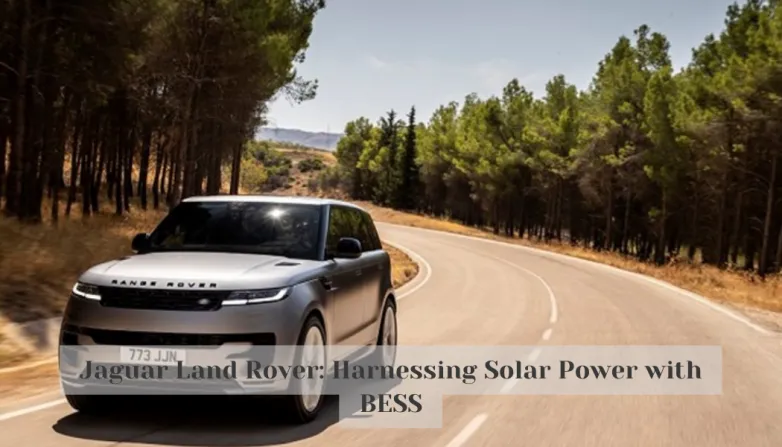Jaguar Land Rover: Harnessing Solar Power with BESS
- Jaguar Land Rover and Wykes Engineering join forces to develop a Battery Energy Storage System (BESS) with second-life EV batteries for sustainable energy storage in the UK. BESS will store up to 7.5MWh of energy with a smart inverter to manage energy supply and demand.

Jaguar Land Rover (JLR) has partnered with Wykes Engineering to develop an energy storage system in the UK that will use second-life batteries from Jaguar's prototype and engineering test electric vehicles. The system, called a Battery Energy Storage System (BESS), uses 30 I-PACE batteries and can store up to 2.5MWh of energy. JLR aims to provide enough batteries to store 7.5MWh of energy by 2023. The BESS is connected to an advanced inverter to manage energy and can both draw power from the grid during off-peak hours and feed energy back to the grid during peak hours.The batteries are removed from the I-PACEs and slotted into racks in the containers without hassles, making the project more sustainable. Through this, they are able to maximise the solar park's output and store any excess energy that would normally be lost when the grid reaches capacity. This is an innovative project that demonstrates how EV batteries can be reused for renewable energy applications.
What Benefits Does JLR's BESS Provide Through Reused EV Batteries?
- The BESS system is able to store up to 2.5MWh of energy and aims to provide enough batteries to store 7.5MWh of energy by 2023.
- BESS can draw power from the grid during off-peak hours and feed energy back to the grid during peak hours.
- The batteries are removed from the I-PACEs and slotted into racks in the containers without hassles, allowing for quick installation and a more sustainable approach.
- Through this, the solar park's output is maximised and any excess energy that would normally be lost is stored.
- This innovative project demonstrates how EV batteries can be reused for renewable energy applications, thereby providing a host of benefits, such as reducing manufacturing costs and creating a more sustainable future.
Also read

